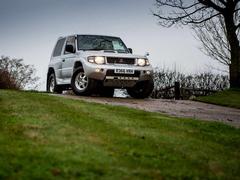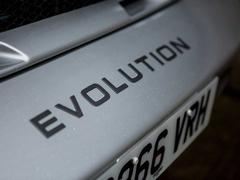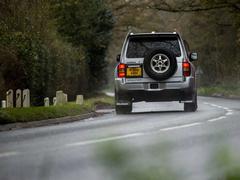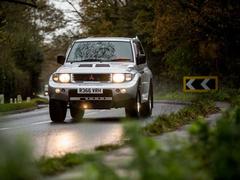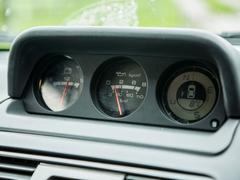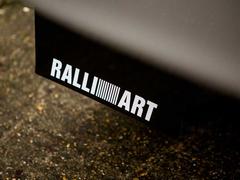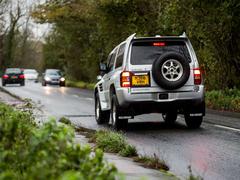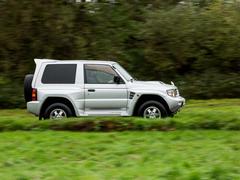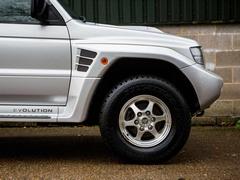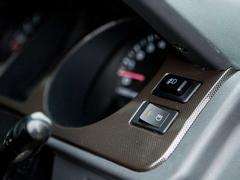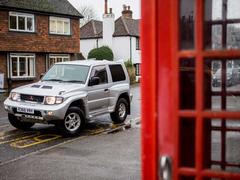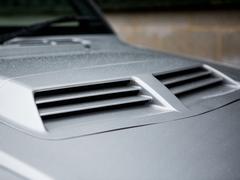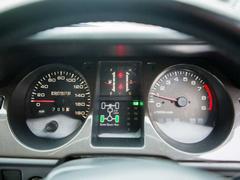Mitsubishi Pajero Evolution: PH Heroes
From the quirkier end of the PH Heroes spectrum thunders a most unusual Mitsubishi with proper motorsport pedigree
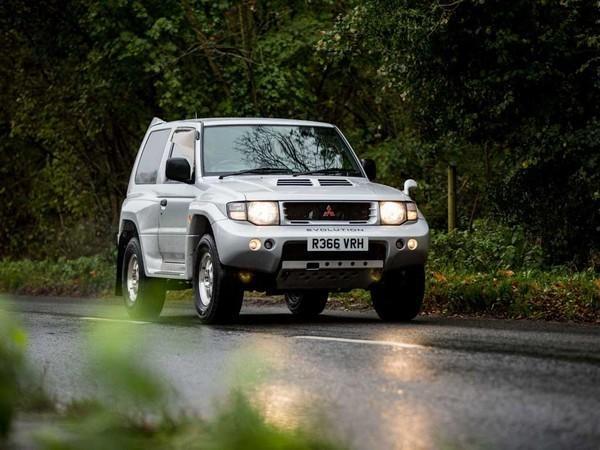
You can have your own discussion about whether Porsche's 917 'road car' is the ultimate example of a manufacturer taking the proverbial with homologation rules or want to pick a Group B car of your choosing to illustrate the same point. But I'll bet the Pajero Evolution is one car you wouldn't have considered as an example of the same. Built between 1997 and 1999 it did the trick though, helping Mitsubishi add to its formidable tally of Dakar rally victories.
You will of course be aware that by the late 90s Mitsubishi was well versed in building suitably crazed road cars in order to qualify its rally models entry into the WRC, where lunatics like Tommi Makinen were able to exploit them to the full. Back then even rivals were astonished at the ability to transform the otherwise defiantly beige Lancer saloon into a world-beating rally car but what it achieved with the Pajero is perhaps an even greater achievement.
Humble beginnings
Especially if you're familiar with the standard vehicle, known as Shogun in Europe thanks to an infamous mistranslation of Pajero in Spain. With a live axle hanging out back, most motorsport engineers wouldn't have bothered but Mitsubishi called in the ARMIE. OK, not the actual military. But instead an 'All Road Multi-link Independent suspension for the Evolution' - that's right, it engineered the short-wheelbase Pajero to have all-round independent suspension.
While poking around under the old girl's skirt, engineers also added front and rear Torsen limited-slip differentials and widened the track by a mighty 125mm at the front and 110mm at the rear. Since it would spend most of its life airborne, they also lengthened suspension travel to 240mm up front and 270mm at the rear.
Under the bonnet, the standard engine was junked for a more muscular 3.5-litre V6 with variable valve timing. The result was an engine that produced 280hp and 256lb ft by the famously elastic 'gentlemen's agreement' of the time; suffice to say it's reckoned the actual figure was a tad more.
Evolved
Externally, the engineering feast continued with an aero kit sufficient to have its Lancer Evolution stablemate feeling a little inadequate. Weight saving panels, including an aluminium bonnet, finished the spec. In the metal it looks and feels almost Ferrari F40 exotic, with proportions not unlike a Metro 6R4 on stilts.
Our featured car is only the second Pajero Evolution I've seen up close. It's no surprise really; just 2,500 PajEvos were ever made and none were officially imported. The first time I saw the full race version was a few weeks before the Baja 500 Mitsubishi was using as a test event for entering a plug-in hybrid Outlander into the Dakar.
Sinking slowly into the mud in a forest waiting for the plug-in hybrid I started hearing noises. It sounded like a lunatic set loose with a 12-gauge. Perhaps even more worrying as it came closer the detonations alternated with what sounded like an especially powerful chainsaw. Then, in a flash of yellow and white, a squat 4x4 bounced clumsily into view before ploughing nose first into the tight, muddy right-hander. It looked like a disaster unfolding before my eyes before its stumpy tail arced round into a neat drift and the chainsaw sound once again erupted and the little off-roader disappeared into the forest. Graceful it wasn't but fast it was, the image vivid to this day.
No wonder I'm excited to be driving the closest thing to that car you can take on the road.
Automatic choice
Mitsubishi offered both a manual and auto and this car's the latter. But since this is what the race cars used it's actually the purist's choice. Like every Evo I've ever driven the interior is shocking in its uniform greyness and lack of drama, save for a set of Recaros and token fake carbon.
Starting up the V6 sounds shocking. It's far smoother than the raspiness of the rally car but, off the mark, acceleration is strong. Since it was never officially figured, owners will debate long into the evening how fast a healthy PajEvo is but, safe to say, running on high octane fuel, the 0-62mph sprint is said to take less than eight seconds. Not blisteringly quick on paper but it feels fast enough at the wheel.
The ride, meanwhile, instantly adds confidence to how fast you can hustle the Mitsubishi. There is an unfortunate pogo effect at low speeds but, up the pace, and it settles. Our car creaks but, according to the forums, it's almost certainly dust in the bushes and is nothing to worry about. The gearbox isn't as horrendous as you'd think. It's smoother and quicker to react than you'd ever give credit for, especially for a car of this vintage. The only thing that might cool your boots is the cost and rarity of spares - a set of official Ralliart mudflaps alone could cost upwards of £600!
Mode operandi
On the move there's the choice of rear-wheel drive, high-range all-wheel drive, high-range diff lock, or low-range diff lock. In other words getting stuck is very unlikely. What does date the PajEvo is steering that gets increasing vague at speeds. But its lack of body roll means you really can hustle the big 4x4. Not something you can say about anything else for this money that can also tow 3,500kg.
Back in 1997 when it was launched those homologation tweaks really did work. It was so quick it not only dominated its T2 class, supposedly built on stock vehicles, but it regularly beat vehicles in the faster, less regulated, T3 prototype class. It was so fast it ruled the Dakar, winning outright in both 1997 and 1998. PajEvos are still campaigned to this day too.
Returning the Pajero to FastClassics with an appropriate coating of winter grime it's hard not to be smitten. OK, the £13K asked for this car isn't shy. But for the sheer comedy value it almost seems worth it. And given the wild prices being asked for other homologation specials - especially ones with winning provenance like this - you could almost convince yourself it's a bargain.
MITSUBISHI PAJERO EVOLUTION
Engine: 3,497cc V6
Transmission: 5-speed auto, 4WD
Power (hp): 280@6,500rom
Torque (lb ft): 257@3,000rpm
0-62mph: 8.5sec
Top speed: 130mph
Weight: 1,970kg
MPG: N/A
CO2: N/A
Prices: £9,000-£13,000
Thanks to Fast Classics for the loan of the Pajero; it's since sold but check out some of the other delights they have for sale here!
[Sources: technical data from AutoSnout.com; additional info Mitsubishi Motors]
Images: Chris Teagles
Gassing Station | General Gassing | Top of Page | What's New | My Stuff

